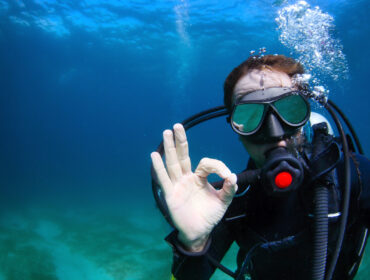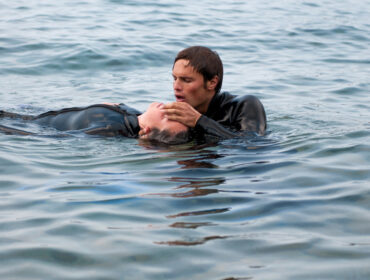One of the most common emails we receive is people asking for advice on how to make money diving. The second most common is from divers asking about SCUBA equipment replacement for items they’ve lost on dives. Combine these two requests and it suggests a need for search and recovery diver skills!
Search & Recovery vs Search & Rescue
Search and rescue is used to describe searching for living beings, be it human or animal. Search and recovery is limited to inanimate objects since they don’t need rescuing. In the case of public safety divers, search and rescue may turn into search and recovery, but for the recreational SCUBA diver, we will focus on search and recovery.
Make (or Save) Money
Have you ever dropped your sunglasses, light or a camera lens off the side of a dock or boat? If you know how to recovery that object, you just saved yourself some money! Spend a little time with SCUBA gear near a crab dock or a popular swimming hole and you’re bound to have people approach you asking for help recovering anything from sunglasses and crab pots to engagement rings and boat engines.
Finding an Item Using an Expanding Square
There are a variety of underwater search patterns, each suited to specific conditions, but one of the more popular and easy to use is an expanding square search pattern. As the name suggests, we will be making a series of squares that continue to grow in size until we find out object.
The starting point is decided based on the information you learn before the dive. Start where you best approximate the object to be located. If you’re lucky, you’ll drop down and see the object, then begin the recovery process. If you don’t see it, you’ll need to start the expanding square. Start kicking in one direction. For ease of use, many divers recommend using cardinal directions (north, south, east, west). You will need to determine your starting distance and expansion rate based on the size of the object and visibility. For example, if visibility is great and the object is large, each leg can be larger and the expansion greater than if visibility is poor and the object is small. Once you’ve completed one leg of the square, turn 90 degrees and always in the same direction. Swim the same distance plus however much you plan to expand your square. Once you’ve reached the end of that distance, turn 90 degrees again, swim the same distance plus your expansion and so on.
One of the great aspects of an expanding square search pattern is that it can be easily customized to the conditions of the search. Such aspects include current, visibility, bottom conditions and the object being searched for.
Marking The Item
Some items you find are small and easy to simply carry to the surface like watches, jewelry and sunglasses. Other objects may be more safely recovered using a lift bag which you may or may not have. A simple item to carry that will assist in recovering larger objects is a Pelican Float with 100′ Line. Compact and easy to use, attach the line to the object you need to recover and let the float ascend. As long as you’re in less than 100′ of water, you now have a bright floating object on the surface marking where your item is. Now you can come back with the proper equipment at your leisure.
What is your preferred search pattern?




